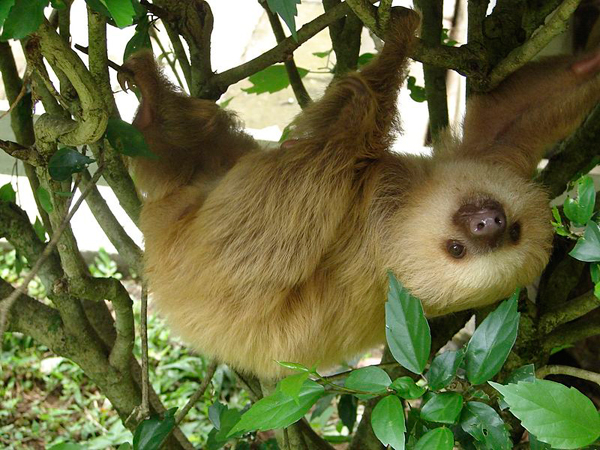
If you’re looking for an unusual way to start your path from tourist to townie while living in Costa Rica, you could help preserve Costa Rica’s amazing biodiversity by volunteering at a … sloth sanctuary. Located near Cahuita, a small town on the shores of the Caribbean, the “Aviarios del Caribe” has turned from a private animal orphanage into a major research center and local tourist attraction over the last 20 years. You may recognize some of its sleepy, cuddly inhabitants from a YouTube video that went viral a while ago and launched a thousand “OMG, how cute!” comments.
However, part of the sanctuary’s mission is to spread awareness about this fascinating species and teach people that sloths are endangered wild animals that do not make good pets. Therefore, its owners – an intercultural couple, consisting of Luis and Judy, a former US expat who settled in Costa Rica when she married her local-born husband – put great emphasis on the fact that a volunteer’s life isn’t all about putting deserted baby sloths into soft pink onesies to keep them warm. But if you bring along true passion for preserving our environment, a proper work ethic, and some intercultural skills, this could be a great reason for you to dare the move overseas.
In exchange for board and lodging, you have to commit for at least one month to helping take care of the numerous four-legged (or should that be three-toed?) residents. Of course, that means you won’t get 10 to 15 hours of sleep like them! Tasks include getting up before 6am to feed the sloths, slicing countless veggies for their midday meal, and – although the average sloth defecates but once per week – cleaning up sloth poop. Not only do you have to be prepared for the less glamorous aspects of animal-keeping: You should also know that even the best care at Judy’s “slothpital” can’t prevent orphaned, injured, or sick sloths from dying. In case of illness, the animals may have to be autopsied to determine which disease killed them. So, everyday business at a wildlife sanctuary isn’t always for the tender-hearted.
Should you still be determined to support Judy, Luis, and their numerous “guests”, you had better plan well in advance. Since film-maker Lucy Cooke, a British globetrotter, presented them in an extremely popular Animal Planet TV documentary last year, the “Aviarios del Caribe” has been swamped with requests and is, so to speak, completely booked for the near future. But don’t hesitate to enquire when they may need helping hands again, once the (possibly short-lived) boom dies down. It’s a wonderful opportunity to start exploring Costa Rica, a great country that has just begun to discover its huge potential for eco-tourism, and to pick up some Spanish on the way. Even if the volunteer placement shouldn’t work out, the center still offers guided tours for visitors – and the possibility to “adopt” a sloth via donating for its care.
Find out more about the Choloepus and the Bradypus on www.slothsanctuary.com!


One of the vest ways of discovering Costa Rica is by Volunteering Programs. Central Pacific of Costa Rica is well known as the home of the sloth, in better lines, Costa Rica is the home of the sloth, as Animal Planet said in a TV show focus on the preservation of the sloth in Costa Rica.
Organizations in Costa Rica need the help of many people to save alive the sloth